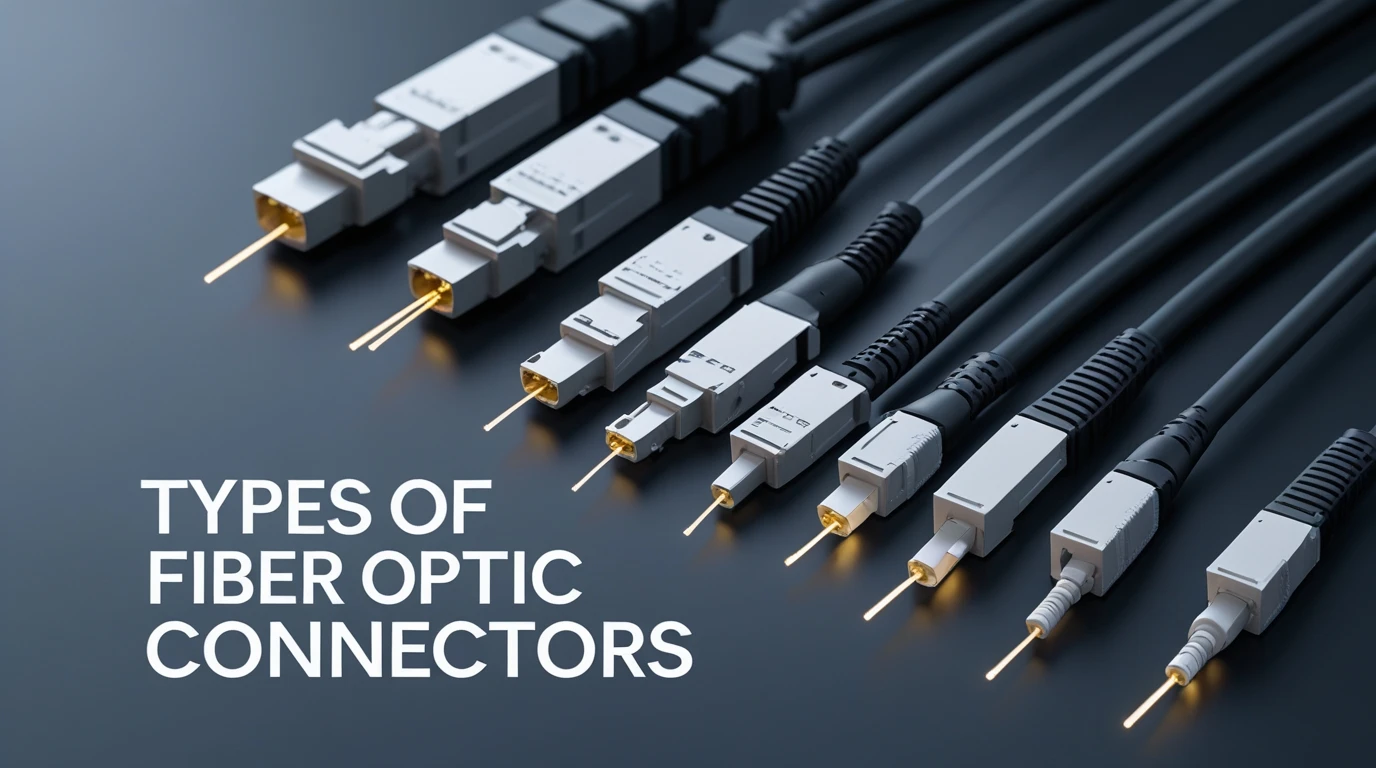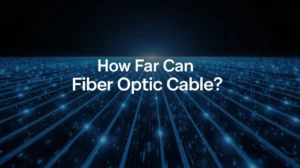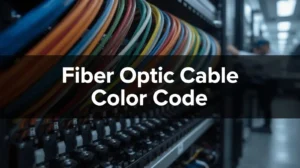Understanding the Basics: What Are Fiber Optic Connectors?
If you’ve ever wondered about the types of fiber optic connectors, you’re not alone. These connectors are small parts, but they do an important job. They connect fiber optic cables together and help light signals travel from one place to another without losing speed or quality. These light signals carry internet, phone calls, videos, and more. Without the right connector, the signal can get weak or stop working.
Fiber optic connectors are different from regular wire connectors because they deal with light, not electricity. That means they have to be clean, exact, and strong. In this article, we’ll learn about many types of connectors and how they help in everyday technology.
Why Proper Connectorization of Optical Fiber Matters
Connectorization means putting connectors on the ends of fiber optic cables. This might sound simple, but it’s very important. The right connector helps the cable send light clearly, without losing data. If a connector is dirty, loose, or not the right type, the signal might not reach its destination.
Imagine trying to drink through a straw with a hole in it—some of the juice won’t make it to your mouth. That’s what happens with bad connectors. Clean and correct connectors help networks stay fast, clear, and safe. They also make it easy to connect or disconnect cables when you need to fix or upgrade things.
Good Connectorization saves time, prevents errors, and makes your fiber setup last longer.
Exploring the Main Types of Fiber Optic Connectors
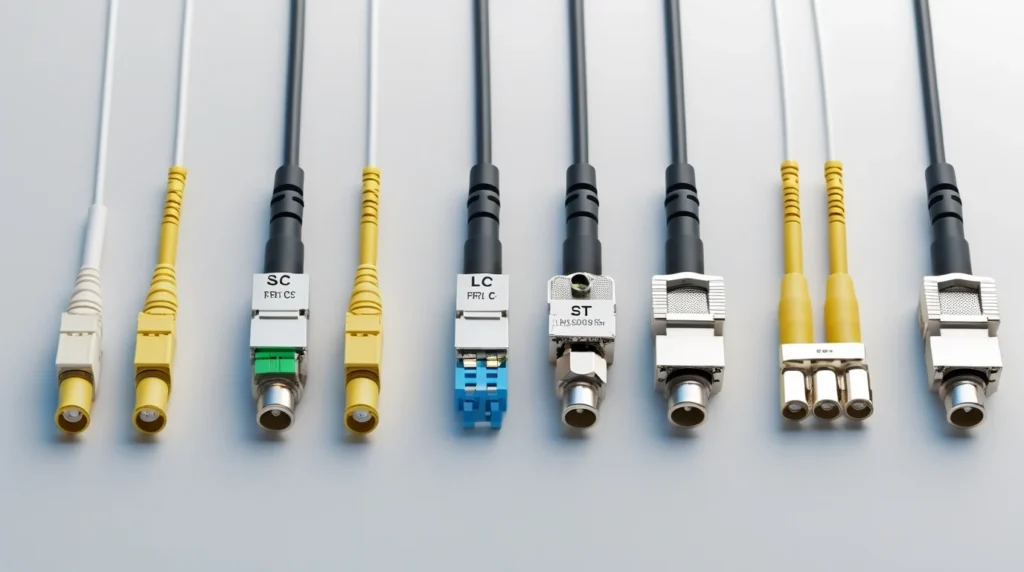
There are many types of fiber optic connectors, and each one is made for a special job. Some work best for fast internet. Others are better for telephone lines, big office buildings, or hospitals. Picking the right one depends on the job you need it for.
The most common connector types include:
- SC (Subscriber Connector)
- LC (Lucent Connector)
- ST (Straight Tip Connector)
- FC (Ferrule Connector)
Some connectors are great for short distances, and others work better for long cables. You’ll also find different connectors used with single-mode or multimode fiber. Later, we’ll explore what those mean and where each one works best.
SC Fiber Connector: Simple and Popular
The SC connector is one of the most well-known fiber optic connector types. SC stands for “Subscriber Connector,” and it’s been used since the 1980s. It has a square shape and a “push-pull” design. That means you can plug it in easily and take it out without twisting or turning.
SC connectors are used in offices, homes, and large networks. They are simple, quick to install, and not too expensive. Many fiber optic wall boxes and panels use SC because it’s sturdy and easy to use.
It works well with single-mode fiber, which is great for long-distance communication.
LC Fiber Connector: Small Form, Big Impact
The LC connector is smaller than the SC, which makes it great for tight spaces. LC stands for “Lucent Connector,” and it’s one of the most used types in fiber optic cable connections, especially in data centers.
Its small size allows more connections to fit into one panel. This is helpful in places like server rooms where space is limited. LC connectors use a latch to stay in place, and they are easy to handle.
They are often used with single-mode or multimode fiber connectors, depending on the setup. Many modern systems now use LC because it supports fast speeds in small areas.
ST Fiber Connector: A Twist-On Classic
ST stands for “Straight Tip.” This connector looks like a little metal cylinder. To plug it in, you push it into the socket and twist it until it locks. That makes it stay in place even when there’s a lot of movement or vibration.
ST fiber connectors were very common in the past, especially in schools, factories, and older office systems. Some networks still use them today. They are mostly used with multimode fiber, which works well over short distances like within buildings.
Though newer connectors are more compact, ST is still trusted for its durability.
FC Fiber Connector: Built for High-Vibration Setups

The FC connector is made for tough jobs. FC means “Ferrule Connector.” It’s known for its strong screw-on design that keeps it from moving or falling out. You’ll find FC connectors in labs, factories, and areas where things shake or move a lot.
This connector works mostly with single-mode fiber because it keeps the signal steady over long distances. It’s also great when you need a very exact connection.
Though it’s not as common in homes or small offices, it’s perfect for places that need secure and steady links, like phone networks and research centers.
Comparing Single Mode vs Multimode Fiber Connectors
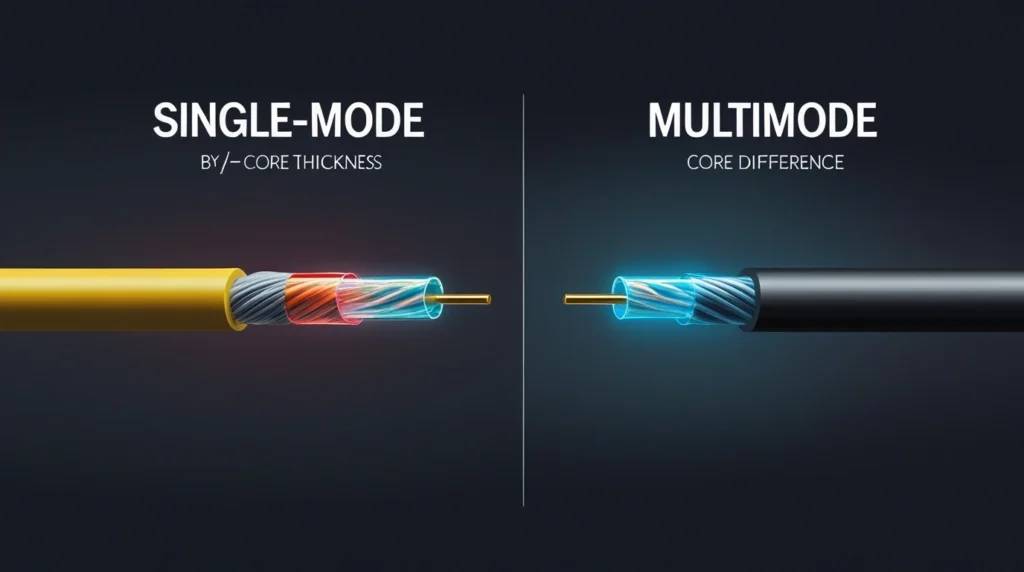
Fiber connectors are often labeled for single-mode or multimode fiber. But what’s the difference?
- Single-mode fiber sends one light beam straight through. It works well for long distances like across cities or between buildings. SC, LC, and FC are often used with single-mode.
- Multimode fiber sends multiple beams at once. It’s best for short distances, like inside a building. ST and LC are commonly used for multimode jobs.
The connector must match the type of fiber. If you use the wrong one, the signal can be weak or lost. That’s why knowing the mode is just as important as the connector itself.
A Quick Guide to Fiber Optic Termination Types and Techniques
“Termination” is the process of ending a fiber optic cable with a connector. There are two main fiber termination types:
- Mechanical Termination – Uses pre-polished connectors. It’s fast and doesn’t need heat, but might lose more signal.
- Fusion Splice Termination – Melts the fiber ends together. It takes longer but gives a stronger and cleaner connection.
When connectors are added, they need to be clean and aligned perfectly. Special tools make sure the fiber is cut straight and polished properly. Many installers use an optical fiber connector chart to choose the right connector based on job needs.
Termination also affects cost, speed, and quality, so it’s an important step in every fiber project.
Choosing the Right Fiber Connector for Dallas, TX Projects
In Dallas, TX, there are many types of buildings and networks—from schools to hospitals to tech companies. Each project needs the right connector to match its purpose. For example, a short fiber link between two computers might use an LC multimode connector, while a large internet line running across the city might use SC single-mode connectors.
At Heritage Cables, we help clients pick connectors based on the building, environment, and speed needs. We also look at the space available, future upgrades, and how easy it will be to make repairs later.
Whether you’re adding new lines or upgrading an old system, using the right connector keeps your network fast and trouble-free.
Final Thoughts: Matching Fiber Optic Cable Connectors to the Job
There are many different types of fiber optic connectors, and each one has a job to do. Some work best for long-distance lines. Others are better for quick, local networks. Picking the right one helps the system stay strong, fast, and easy to fix when needed.
Here’s a quick recap:
- Use SC for simple, strong connections
- Pick LC when space is limited
- Choose ST for older setups or tough buildings
- Go with FC for high-vibration areas
- Match your connector to single-mode or multimode fiber
- Choose the right termination type for your needs
Fiber technology keeps getting better, and new connectors may appear. But understanding the main types helps you make smart choices today. With the right knowledge, anyone can build or maintain a fiber optic network that works smoothly for years to come.
For expert help on selecting or installing fiber connectors, contact Heritage Cables. We’ll make sure your connections are fast, reliable, and ready for the future.

